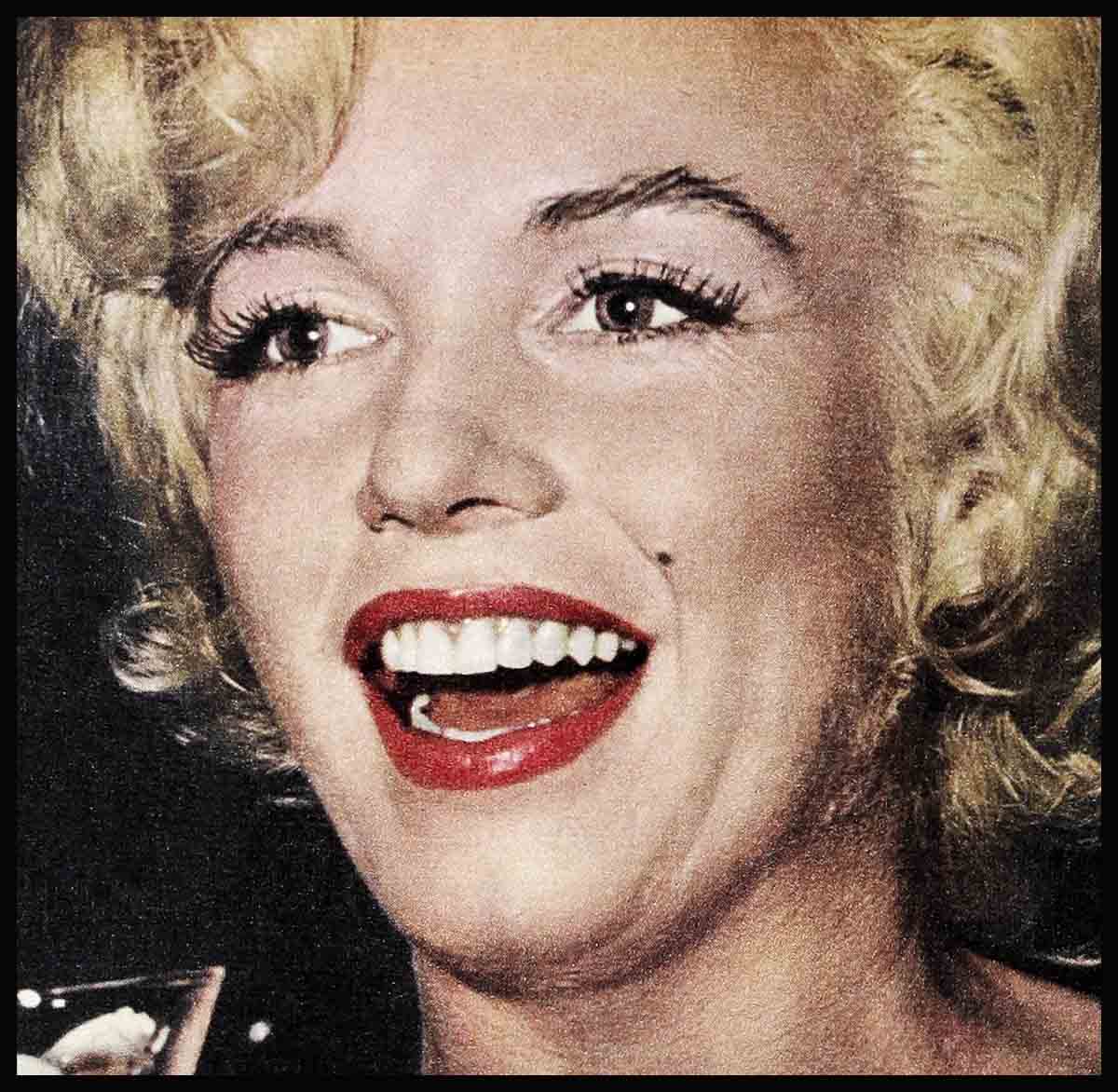
What Was Marilyn Monroe Doing At 685 Third Avenue?
That’s me—circled in red. And I’m the only guy in all the world who knows the answer to that question. Why? Well, you’ll see. It’s a crazy story.
You know how sometimes, all of a sudden, you feel that something’s going to happen—something important? Well, one lazy Saturday this spring, I was walking along New York’s fashionable 57th Street taking in the fresh air, having just seen “Gigi” at the plush Sutton Theater for the third time. I guess you can guess I’m a movie fan. I love sitting in a dark theater and munching on a bar of candy and letting the world of the silver screen take over all my problems for a couple of hours.
But that Saturday, after I’d seen “Gigi,” I was wandering along 57th Street, looking at the tall apartment buildings and at the cluttered antique shops, when smack-bang-boom, there she was.
Marilyn.
I couldn’t believe it at first, because she looked more like a fan than a star. She wore a loose camel’s hair polo-coat, brown leather pumps and a pink scarf over her famous blond hair. And she had on hardly any makeup. I stared. I couldn’t help myself. Then my first impulse was to run and ask for her autograph.
But something stopped me. “No,” a voice inside of me whispered. “Follow her!”
Now that’s not very nice, I know, but I just couldn’t help it. I had a wild curiosity about what she was going to do.
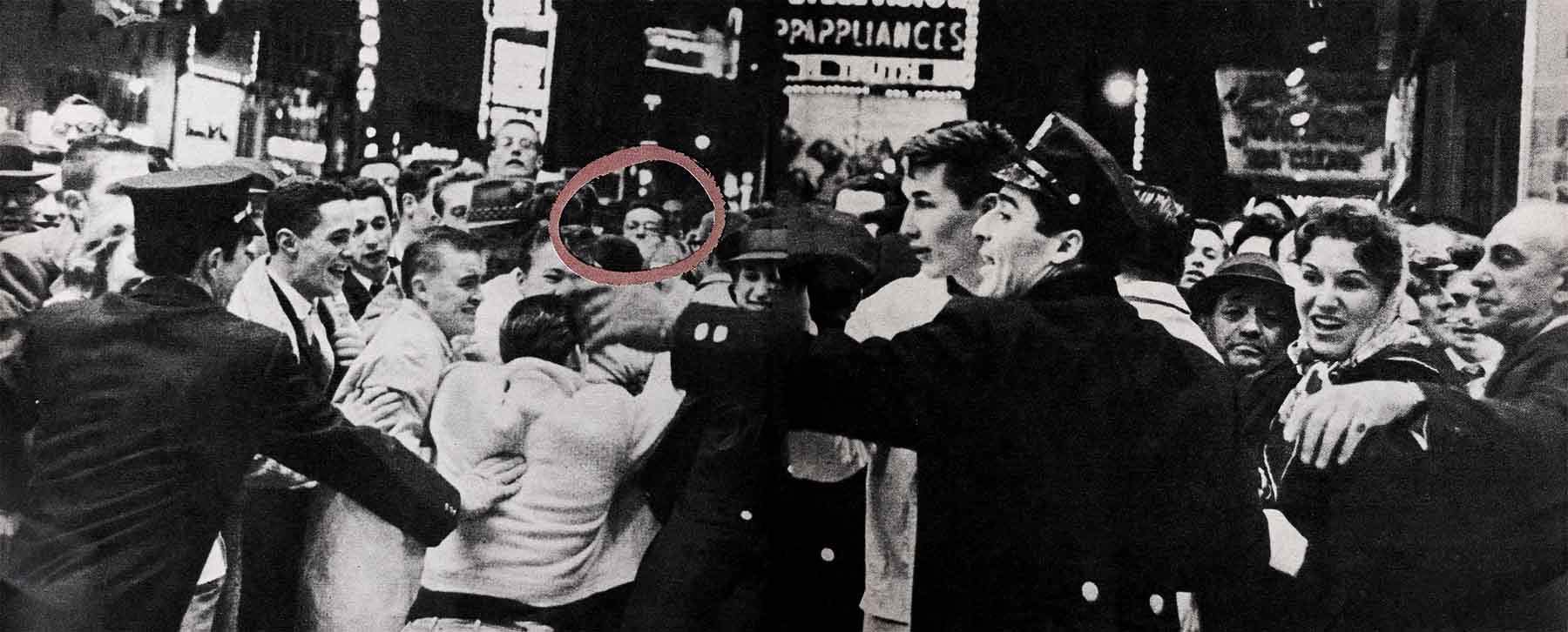
So I waited for her to get a headstart and I shadow-trailed Marilyn all over her East Side neighborhood. In New York each block is like a community, with ‘a supermarket, drug store, bakery. If you really wanted to, you could live on one block forever—never leave the vicinity, that is—because you’d be able to do everything from having old shoes resoled to buying ham-and-cheese sandwiches at the delicatessen.
Marilyn walked with her bouncy Monroe walk, but, strangely enough, not very many people recognized her, everybody evidently taking her to be a part of the New York crowd. I followed her through her rounds of the neighborhood stops, unobtrusively and at a distance.
My first stop was the day-doorman of her building on East 57th Street (I noticed on the mail rack that Marilyn and Arthur lived in Apartment 13E). The building is very elegant, with a marble floor in the lobby, a domed ceiling and delicate murals on the wall. There are reclining Empire couches in a mottled silk unholstery.
Joe Yulstra, the tall Dutch day-doorman, blue-eyed and jowly, told me in a European dialect, “The first time I saw her, she was coming from the grocer’s with a big bag. And some little boy said, ‘Marilyn, Marilyn, give me your autograph. And do you know, she put her big package down and smiled and signed the little boy’s notebook. Now, isn’t that something nice for her to do?”
He added, “She and Mr. Miller, they like to go bicycle riding in Central Park when the weather’s good. She wears white pants and he wears old Army clothes, and both of them whistle and sing. They’re very happy.
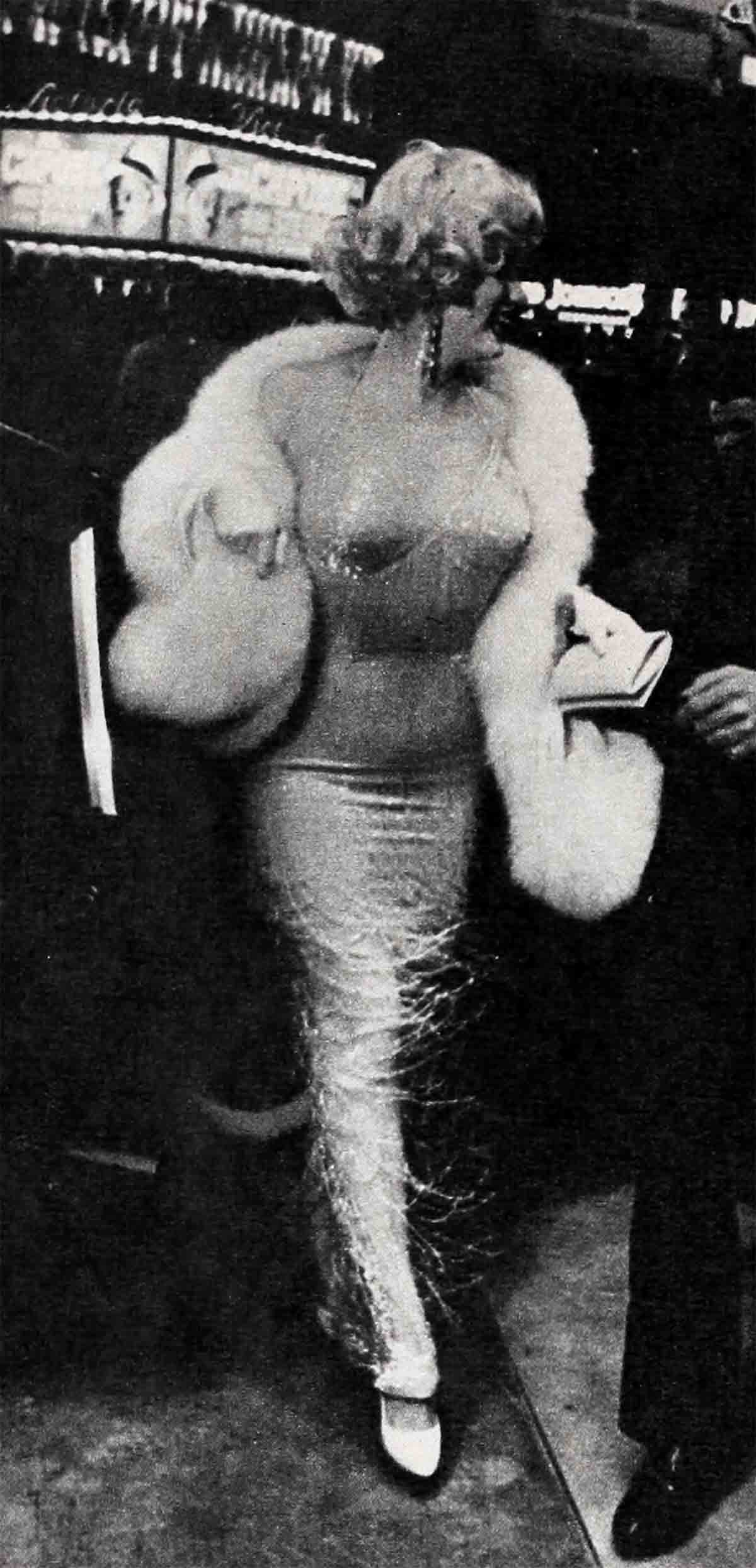
“No, she never wears much makeup in the daytime when she goes out. But I don’t know what she does in the evenings. You ought to ask the night-man, Jimmy McQuade.”
I asked Jimmy McQuade, of course, when that day, and Jimmy, a youngish, handsome man, told me in a thick Irish brogue, “Oh Marilyn? She’s the most sociable of anybody. She just loves kids. She wants a baby more than anything. Everybody says so. She’ll always say hello to a little kid on the street or in the elevator. And you should see Miller’s two children. Just like she was their mother. She’s always buttoning up Robert’s coat if it’s a cold day, and she goes out shopping with Jane for pretty dresses and things.
“Marilyn has a maid, but she isn’t afraid of hard work. Sometimes, when the maid’s sick, Marilyn scrubs the floors. She told one of the neighbors once that hard work never hurt anybody—and I agree with her.”
I asked if Marilyn and Arthur had fabulous parties.
“No,” Jimmy told me. “They don’t entertain too much. They love to go to their country house in Connecticut for quiet weekends, and she always takes her dog, Hugo. He’s a black-and-white bassett hound.
“At night, they go for a walk or to the movies. She dresses up just a little bit, puts on some lipstick—but that’s all.”
One of Marilyn’s first stops that afternoon when I followed her was “The 400 Cake Shop” around the corner on First Avenue. It’s a small shop with glass cases full of tempting, sugar-smelling goodies.
When I talked with Alma, one of the white-uniformed waitresses, she told me Marilyn had a passion for poppy-seed rolls and rye bread. “Oh, she likes desserts, too,” Alma added, “but she doesn’t like anything chocolate. I heard her say once she finally got over her craving for chocolate. And was she glad! Now, she likes cheesecake and macaroons, strawberry tarts and layer cakes. She doesn’t ask for us to deliver—most times she’ll carry the cake-boxes home herself.
“She’s a sweetheart of a customer. Both she and Mr. Miller seem to have a sweet tooth—like mine!”
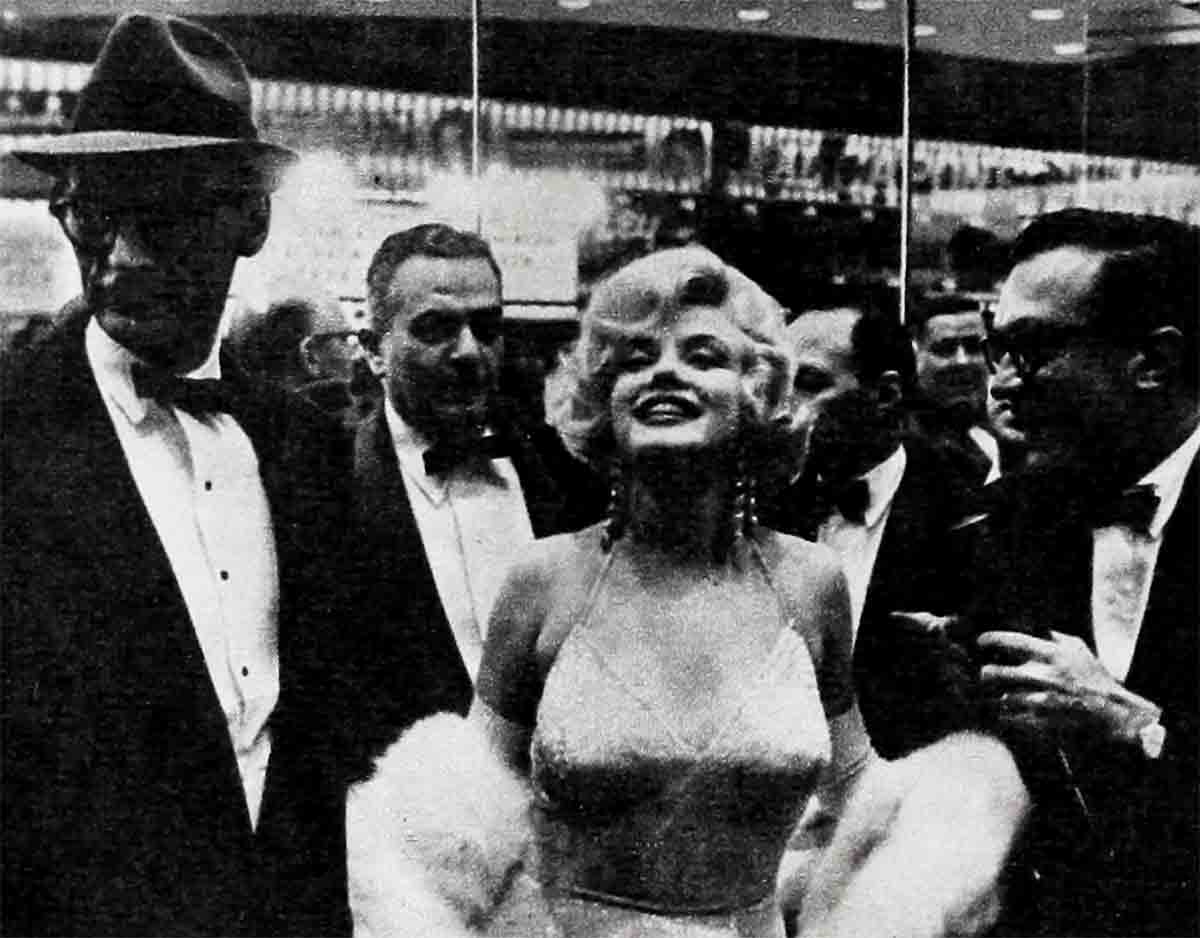
Alma offered me a butter helped herself to one.
For groceries, Marilyn goes to “The Gristede Brothers Superior Market” near the bake shop. When I asked the curly-haired clerk at the counter about Marilyn, he said she likes to take her time in the store and browse through the self-service shelves. She’s always very excited when she discovers a new product, like an instant soup or an unusual cheese. She orders her meat personally, to make sure she gets a good cut.
“Half the time,” the clerk said, smiling, “she takes the groceries with her. The other half she lets me deliver them.”
My next stop was the Sutton Place Stationers at 1040 First Avenue, where Marilyn borrows books from the rental library.
“She doesn’t come in here too often by herself,” the proprietor, Jack Newman said. “Usually she’s with Mr. Miller, and she’s holding on to his arm. I don’t know why, but to me she’s never seemed like Marilyn Monroe, the sexy girl in the movies. She’s just like an everyday housewife who’s crazy about her husband. Mr. Miller stops in for Half-and-Half pipe tobacco or an evening newspaper.
“We carry his book, ‘The Collected Plays of Arthur Miller,’ and she likes to point to it when they’re together, and both of them smile. She’s never dressed up, and he likes open shirts without neckties and old pants. My wife calls the way he dresses ‘in the rough.’
“She always says hello to me. She does read a lot. She’s always exchanging books, but I don’t have time to pay attention to the titles.”
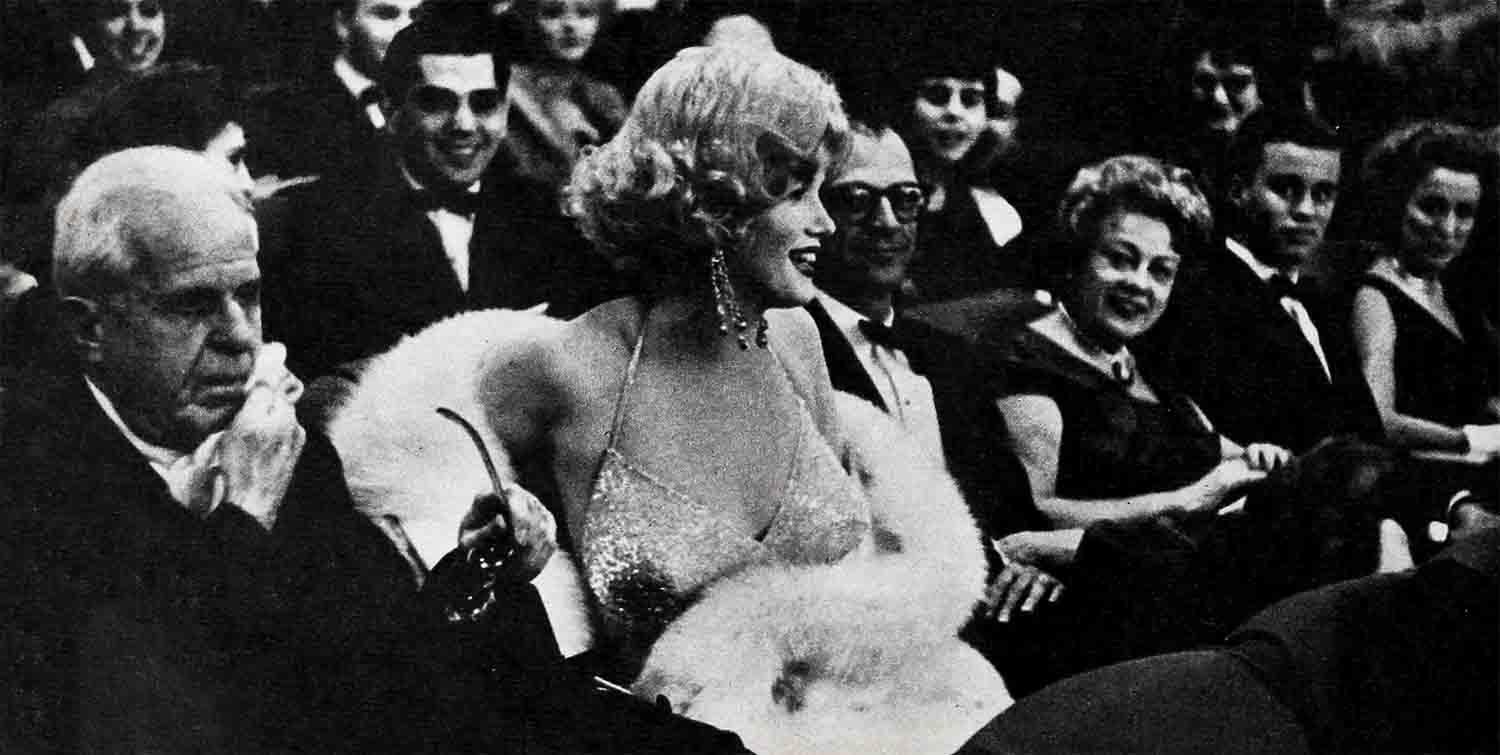
I’d heard that Marilyn loves antique shops, and that afternoon, when I trailed her like a space-age Sherlock Holmes, I noticed her stop a number of times to look in the Third Avenue shop windows.
Between windowshopping, she cookie and visited Schrafft’s Restaurant at 57th Street, sat at the counter and ordered a Broadway ice cream soda (made with coffee and chocolate syrup). Then she continued her tour of the antique stores.
Finally, she did go into one. The French Antiques Store at 957 Third Avenue. It has everything from huge white china dogs to inlaid Oriental chests. I couldn’t take my eyes off the rows and rows of sooty crystal chandeliers on the ceiling, and there was a pleasant scent of lemon oil in the air.
“We never bother Miss Monroe,” a clip-voiced, smartly dressed young man with a soft pudgy face told me later. “Usually one of the salesmen’ll ask if he can help her in any way, but she just shakes her head and looks around. She likes to touch the tops of old chests and feel the smooth finish. She has a genuine love for antiques,” he said. “You can tell from the way she looks at them. No, she doesn’t buy very much, but she does a great deal of looking.”
A few doors down, at 969 Third Avenue, Marilyn paused by a delicatessen and feasted her eyes on the tiers and tiers of gourmet foods in the window: red caviar in flat glass jars, fried Swedish meatballs in cans, champagne-flavored sauerkraut. Across the street is the huge whitestone edifice of Bloomingdale’s big department store, and, when the red light changed, she crossed over.
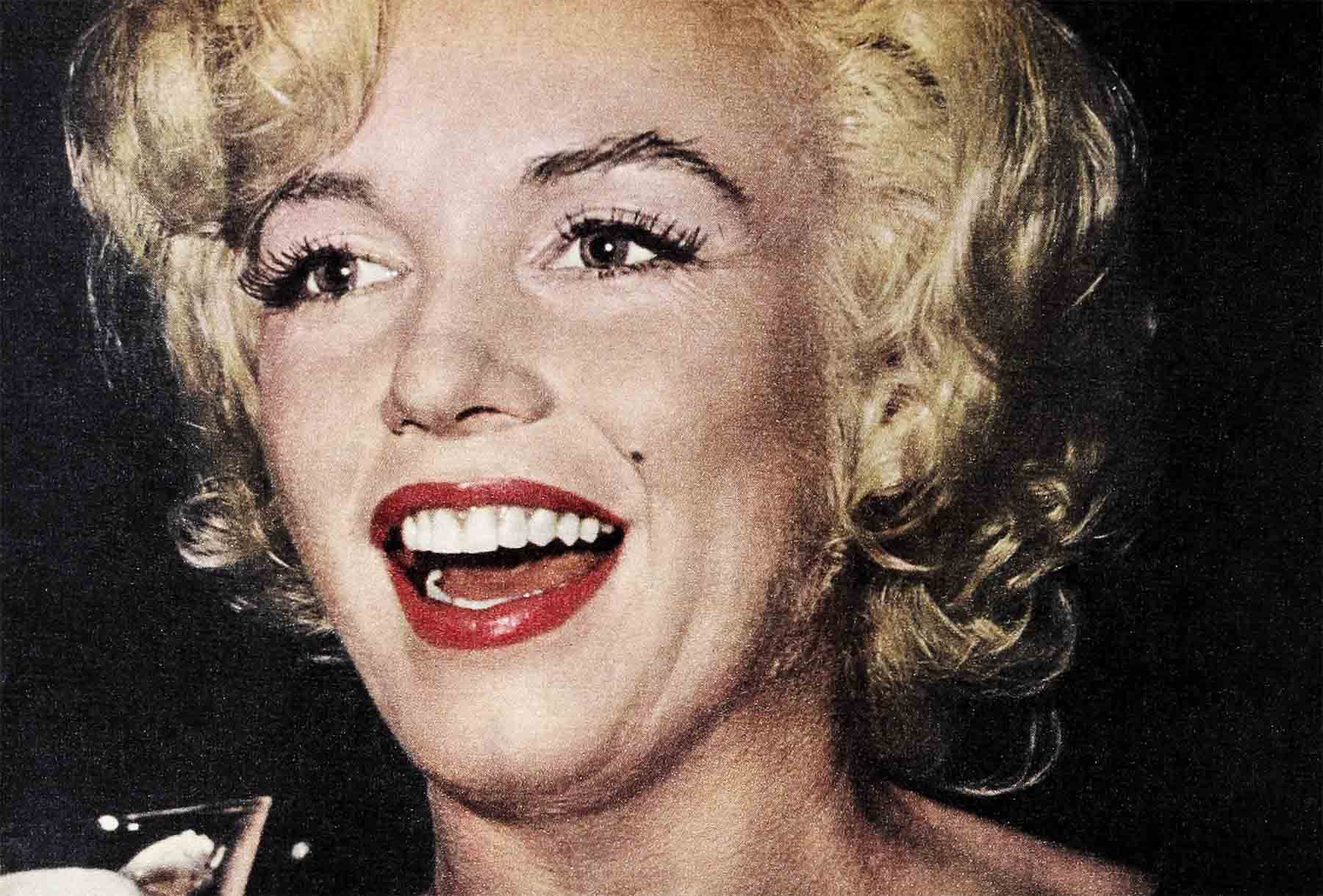
In the store she wended her way through the crowd of Saturday shoppers to the self-service elevators. I barely made it to the elevator in time—just getting there as the door closed. I stood in the back. Marilyn pressed the button for the sixth floor.
When the elevator stopped, she got off and walked towards the housewares department, and, from the sparkle in her eyes and the grin on her face, I could tell she was going to have a field day. She walked from counter to counter, handling bright yellow and green enamelled pots and pans from Europe, studying the apothecary jars of herbs, tinkering with the copper tea kettles.
Finally, she went over to the Au Gourmet Corner, with its chintzy early American atmosphere, and listened to a man in a white apron explain to wandering shoppers the secrets of making the fancy French pastry, “Flutes Enchantees.” She watched him stuff the flutes with a specially prepared sweet cream; then, picking up a recipe sheet from a little table nearby, she folded it into her coat pocket.
There was a pause in the lesson as the cook checked the oven, and two middle-aged ladies near Marilyn, both of them wearing eyeglasses and feathered hats, began talking about what they planned to do for the rest of the day.
“Oh, I was thinking,” one of them said, “about going down Third Avenue for some good Polish sausage. I don’t get to the city too often, and there’s a little place I used to go to ‘where the butcher imported this wonderful kielbasse . . .”
“Where is it?” Her friend was interested.
“Well,” the first one said, “I haven’t been there in a while, maybe a year or two. But I have the address written down somewhere.” She opened her purse and leafed through a bulging address book. “I think I’ve listed it under Polish sausage,” she said, her voice trailing as she flipped the wrinkled pages. “Oh, here it is! ‘685 Third Avenue.’ I guess I never bothered to get the name of the store.”
Marilyn was all ears. As soon as the lesson ended, she went down to the first floor and hailed a yellow cab at the corner. I hailed another cabbie and told him to follow Marilyn. I really felt as if I were in a movie—for a change. We rode down Third Avenue in the thick New York traffic, and suddenly her cab stopped and deposited her in front of a parking lot on 43rd Street.
I got out and watched her. Maybe she was going to pick up her car? But no, she seemed confused. She kept looking all around her.
Then, of all things, she came over to me. I was standing near the streetcorner, pretending I was waiting to cross the street. I suddenly got scared. Maybe she had noticed me following her—and was going to tell me to get lost?
“Hey, mister,” she said, in a soft, whispery voice. “Is this 685 Third Avenue?” pointing to the parking lot.
I could barely get my voice out. “Gee,” I said. “I don’t know. I’ll . . . I’ll ask somebody.”
I asked a passerby who shrugged his shoulders. Then I went across the street to the Gold Coast Cafe and asked the bartender. He said, “Yeah, that’s 685 Third Avenue. Why?”
I told him Marilyn Monroe wanted to know. He looked at me as if I were crazy. I went back to Marilyn and said, “Yes, that’s 685 Third Avenue. . . .”
Her expectant expression fell. She looked so disappointed. “But somebody said this is where they sold Polish sausage, and I wanted to get some. My husband’s crazy about it.”
“Maybe . . .” I ventured, “maybe they’ve torn the building down.”
Reflectively, she shook her head from side to side. “Maybe,” she said. “Oh, they’re tearing down this whole city, and it makes me mad. Isn’t it a shame to see everything go?”
Then she flashed her wide, doll-baby smile, stepped into the street and hailed a taxi. I never got up enough nerve to ask for her autograph. I just stood there like a jerk, not knowing what to say; and that’s when I decided to go back to all the places she had visited that afternoon to find out all about Marilyn.
That following week I heard there was going to be a preem of “Some Like It Hot,” and I was out front, waiting with the fans for Marilyn to appear. There were roving spotlights and TV announcers, and brass bands playing jumpy songs from the twenties.
Marilyn finally stepped out of the shiny black limousine, smiling a wonderful “star” smile to everyone. She wore heavy make-up and a gorgeous skin-tight white gown covered with hundreds and hundreds of glittering bugle beads. And she kept smiling that fabulous smile all over the place.
When she went into the theater with Arthur—who wore a tux and black tie—she sat in the front section reserved for them.
Then, as I watched her, I felt that wonderful feeling you get when you know something nobody else knows. I knew, from “our” Saturday together, another Marilyn, an everyday Marilyn—the housewife who wanted to find Polish sausage for her husband.
THE END
BEFORE THE LAUGHTER COOLS OVER U.A.’S “SOME LIKE IT HOT,” MARILYN WILL BE SEEN IN TWENTIETH’S “TIME AND TIDE.”
It is a quote. PHOTOPLAY MAGAZINE AUGUST 1959




